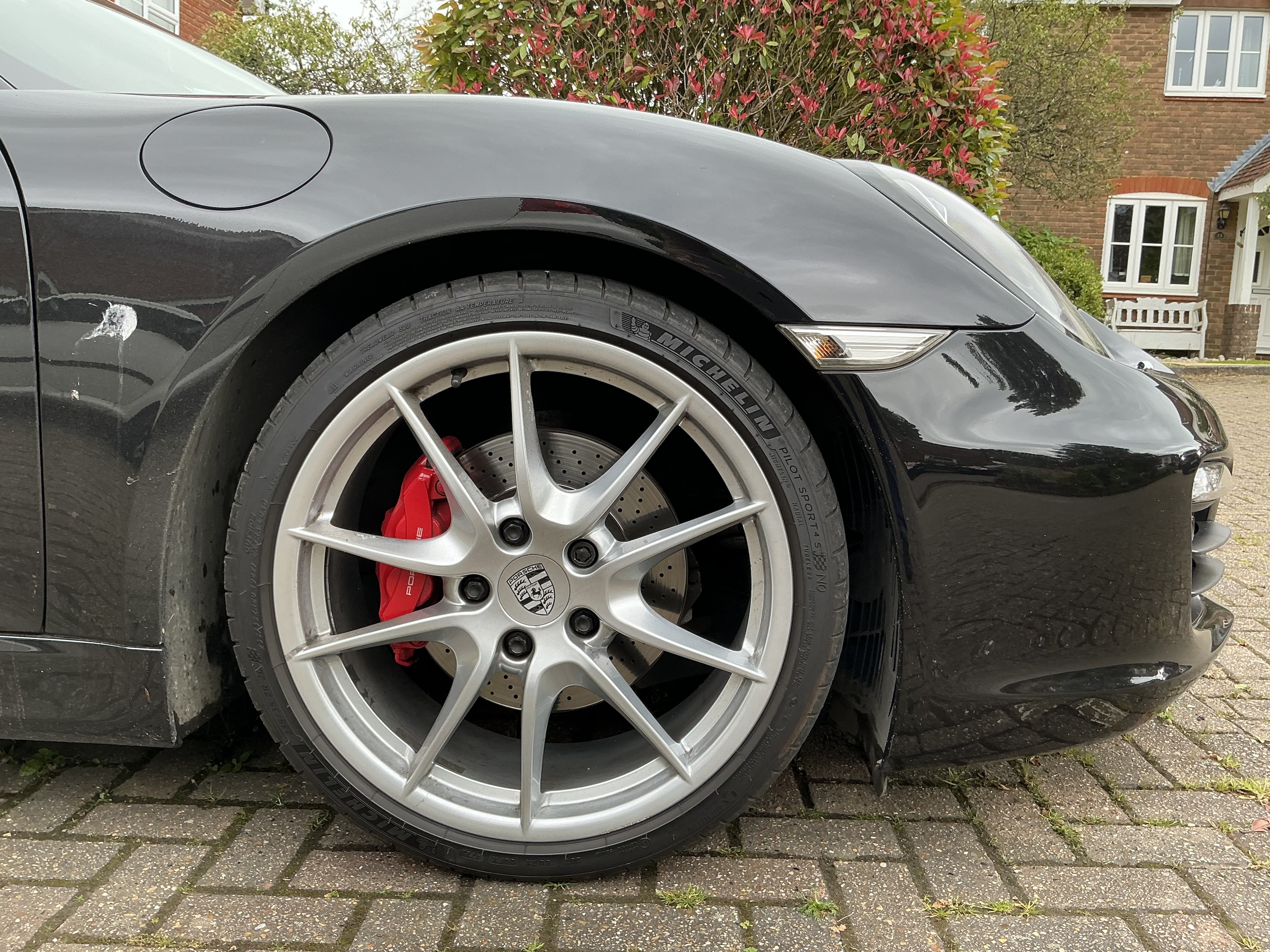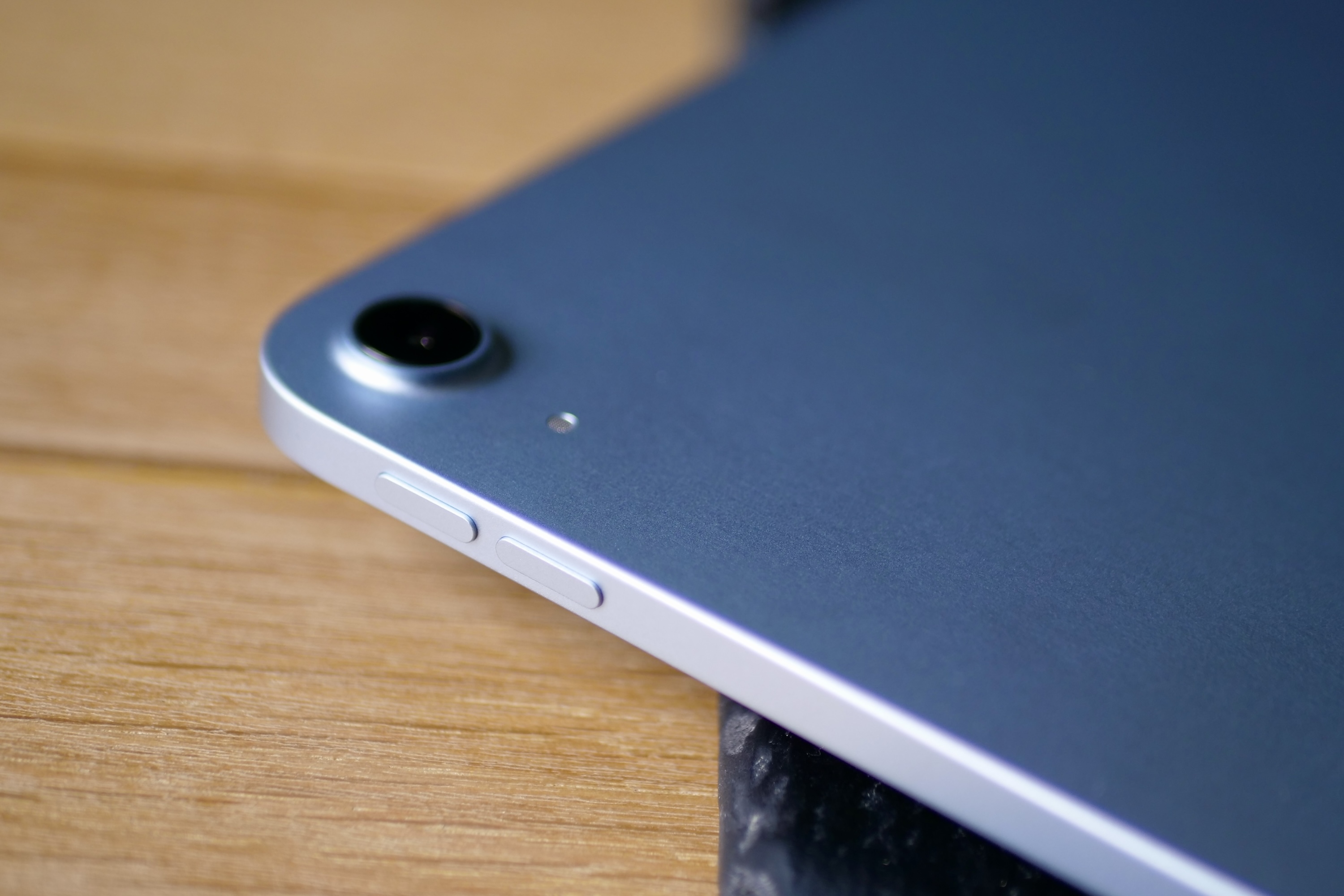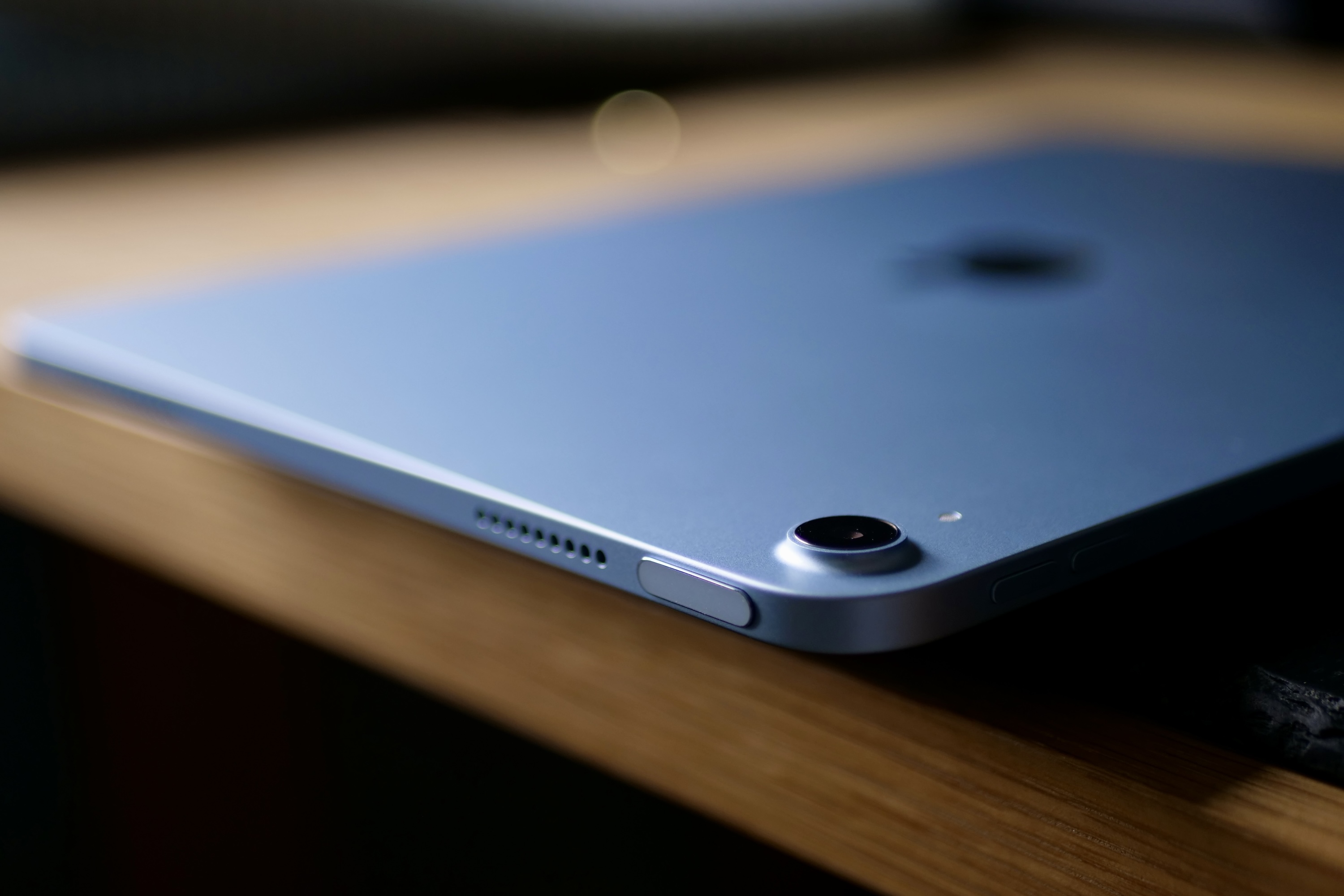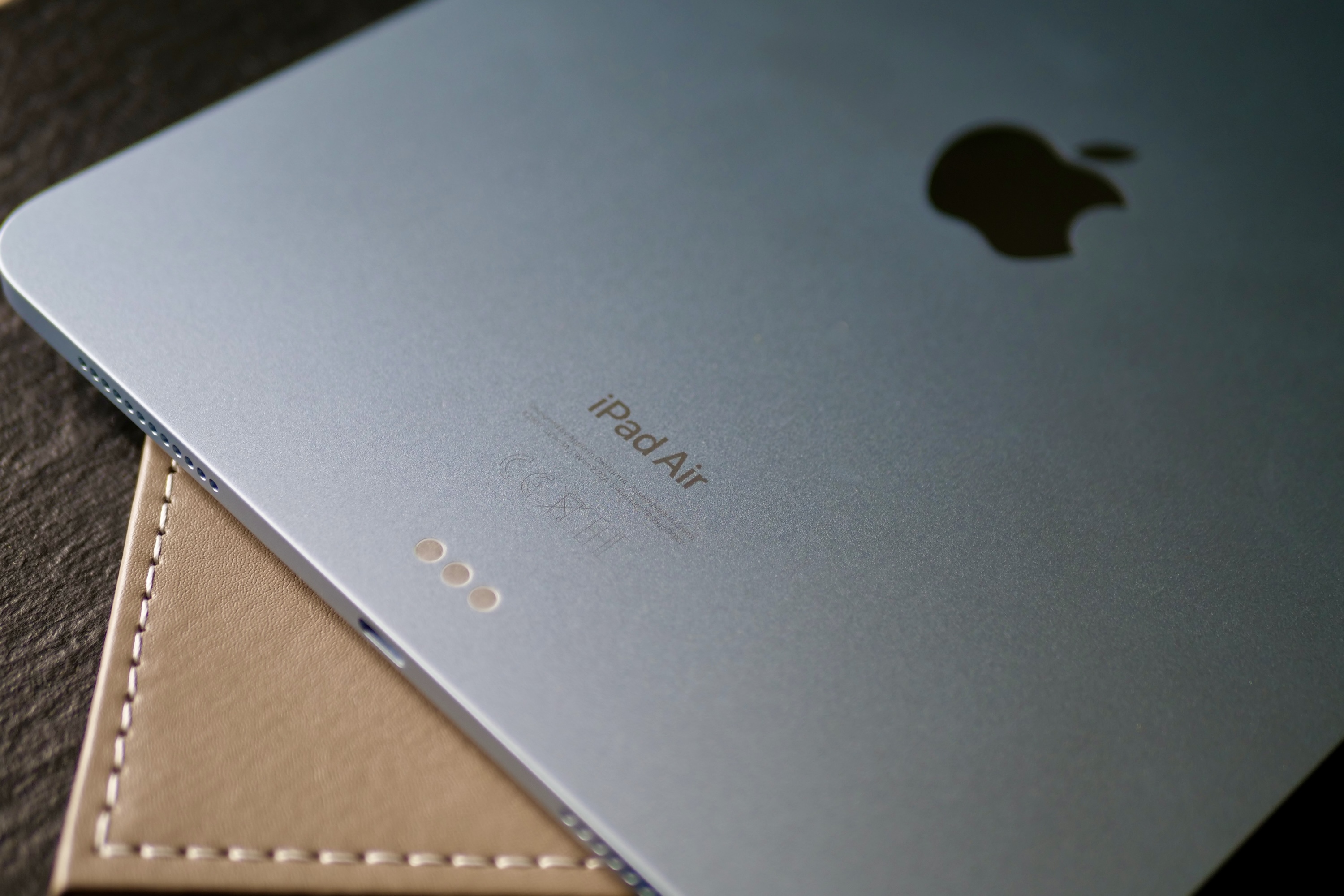
“The Apple iPad Air (2024) will be all the iPad most people need. It's a joy to use casually, and has enough performance and ability to satisfy as a general work device too.”
- Thin, light, and portable
- Huge power reserves
- 128GB minimum storage
- Great for games and video
- Good for general work with a keyboard
- 60Hz screen
- Slow charging
- Little incentive to upgrade
Are you shopping for an iPad, but don’t want the basic iPad or the all-singing, all-dancing (and very expensive) iPad Pro? This likely very common scenario leaves you with the iPad Air (2024), which appears to be the sweet spot in the iPad range thanks to its choice of screen sizes, massive power, and extensive versatility, all for a price that only has three figures in it.
I’ve been using and loving the iPad Air (2024), but there’s a lot you need to know about it before deciding if it’s the one for you.
iPad Air (2024): design

If you’ve seen and held the iPad Air (2022) or the iPad Air (2020), then you’ve also seen and held the iPad Air (2024), as all the changes are primarily inside the tablet rather than out. Despite the screen increasing in size by 0.1 inches, the dimensions of the tablet are the same as the previous model. It’s very thin at 6.1mm and modestly weighted at 462 grams. The Air name is a bit of a conundrum as it suggests this is Apple’s most featherweight tablet, but it’s not as thin or as light as the new M4 iPad Pro. It is slightly lighter and thinner than the 10th-generation iPad, though.
The tablet in our photos is the blue version, and it’s a more subtle, lighter blue than on the iPad Air (2022). It’s also available in Space Gray, Starlight, and purple. The finish is soft and warm to the touch, and the flat polished metal chassis is nicely rounded to make it comfortable to grip and hold. I have had no problem using it without a case, but have found it’s more versatile when it’s placed in one. For example, it operates perfectly with the official Apple Magic Keyboard. For something lighter and less productivity-focused, I’ve found the Zagg Crystal Palace Folio is a good option, as it even has a space for an Apple Pencil built in.

For security, the iPad Air (2024) has a Touch ID fingerprint sensor in the power key. It’s faster than the iPad Air (2022) sensor and far more accurate than the Google Pixel Tablet’s fingerprint sensor. There’s no Face ID despite the front camera being relocated to the side of the slate, which is a bit of a pain when it’s used with the Magic Keyboard.
The iPad Air is still a great-looking, expensive-feeling tablet.
Apple is confident it has found the right design for the iPad Air, as it hasn’t deviated from it for several years. There’s only so much it can do with a tablet, and while the 2024 Air isn’t breaking new ground, it’s still a great-looking, expensive-feeling tablet that’s ergonomically impressive, making it excellent for use at home and out and about. I’ve slipped it into my bag to use later on instead of my MacBook Air, and it’s considerably more convenient. It’s the ideal middle ground for those tasks that sit between using my phone or requiring my laptop. Should you deem such a device necessary, as I often do, the iPad Air (2024) is the ideal size, shape, and weight.
iPad Air (2024): performance and gaming

Let’s start off with some good news. The cheapest iPad Air (2024) comes with 128GB of internal storage space, up from the pitiful 64GB on the previous two models. This is a very good thing, and though iPadOS 17 takes up about 16GB of space, there’s still plenty left over for apps, games, photos, and video. You can also spend more to get 256GB, 512GB, or even 1TB of internal storage space should you want, making the iPad Air (2024) potentially last a lot longer than older Airs, which only had two options — 64GB or 256GB.
Now, on to some unsurprising news. The major tech update for the iPad Air (2024) is the Apple M2 processor. Like the M1 chip in the previous model, it is an 8-core CPU with a 16-core Neural Engine, but with a 10-core GPU. Most of the time, I haven’t noticed any difference in performance over the iPad Air (2022), as it’s fluid, fast, and incredibly satisfying to use regardless of whether you’re simply watching video, multitasking, or working. Putting the two recent iPad Airs side by side and performing the same tasks showed absolutely no difference between them to my eyes.

I don’t play many graphically intensive games, and noticed no difference playing Skate City, Mini Motorway, or Angry Birds Reloaded. They all run perfectly and look brilliant on the big screen. But the iPad’s gaming brilliance for me is in its simplicity, Playing Solitaire+ while the TV is on in the background is relaxing in a way it’s not on an iPhone, all due to the big screen and the intuitive and responsive touchscreen. This comfortable multitasking has been a huge benefit of an iPad since the very first model, and it’s wonderful to see it has not changed even after a decade.
I’m sure that in certain circumstances, the M2 chip will make the iPad Air (2024) a better performer than the iPad Air (2022), but I expect most people won’t come close to troubling the very high limits of this iPad. It may sound like the M2 (or even the M1) is overkill, but I’d much rather have too much performance than not enough, as may be the case with the A14 Bionic (a mobile chip) in the 10th-generation iPad for avid gamers and workers.
Apple iPad Air (2024): screen

The iPad Air (2024) has an 11-inch Liquid Retina screen with a 2360 x 1640 pixel resolution and a maximum brightness of 500 nits. It’s 0.1 inches bigger than the iPad Air (2022) screen, but you won’t notice unless you put them side by side, and even then, it’s hard to spot. The specification is the same though, and this is a shame as I really hoped Apple would add its 120Hz ProMotion technology to the iPad Air this time around, but it remains a 60Hz screen.
Refresh rate aside, I struggle to find any faults with the iPad Air’s screen.
How much this bothers you will depend on your usage and eyes. I notice the difference the most when using iOS and scrolling through apps like Reddit or Chrome, where it’s not as smooth or blur-free as on the iPad Pro. I haven’t noticed any additional eye strain playing games or reading books. The problem is more about making the 2024 Air a worthwhile upgrade. If Apple added a 120Hz screen, it would have made it more desirable to owners of older versions. But as it stands, the visuals and performance of the 2024 version are either identical, or it’s hard to spot the changes compared to other recent Airs under normal use.

For the first time, you can buy the iPad Air in two different screen sizes, either the 11-inch we are testing here or a 13-inch version. The latter has the same overall specifications, and although the screen resolution is higher at 2732 x 2048, the pixel density is the same at 264 pixels per inch (ppi), so you won’t see any difference in quality. Both support the Apple Pencil and Apple Pencil Pro, along with the “hover” mode that’s not available on the 10th-generation iPad.
Refresh rate aside, I struggle to find any faults with the iPad Air’s screen. It’s bright enough so I can see it perfectly in and out of the home, it has a wide viewing angle, colors are vibrant, and there’s very little reflection from the laminated, specially coated glass. It supports both Apple Pencil models, and I really enjoy playing games and watching videos on it. If it had ProMotion technology, it would be just about perfect, which is perhaps why Apple hasn’t introduced it, as it still wants to sell iPad Pro tablets.
iPad Air (2024): productivity and software

I find the iPad Air (2024) is great for work, but I appreciate that others may not. I use Apple’s Pages, Outlook, Teams, Asana, Chrome, and a few other apps to get things done, and the iPad Air handles them all without a problem. Also, iPadOS 17’s multitasking functionality works for me as I don’t put huge demands on the software, which means it never gets frustrating. But when it comes to editing photos or videos, or anything that really needs speedy multitasking or using multiple apps at once, I would turn to my Mac Mini and a monitor.
The Magic Keyboard remains one of the best mobile keyboards around, and I’m still using the model I bought in 2020. Aside from a broken Shift key after an unfortunate drop, it doesn’t need replacing, and I like that it has been reliable and is still supported, considering the $300 price. It’s unfortunate Apple has removed support for the Magic Keyboard Folio on the 2024 iPad, as anyone wanting a cheaper keyboard accessory will have to look at another manufacturer.

Is the iPad Air (2024) a laptop alternative? Kind of, but it’s more of an in-between device, where a smartphone isn’t enough to get things done quickly, but the work you’re doing doesn’t demand a laptop. Ans iPadOS 17 is really powerful, but you do have to take time to learn its gestures and multitasking features and accept that it will never quite match macOS or Windows for pure productivity power. I like that it’s easy to connect an SSD drive with USB C, though, and the Files app makes exploring it fast and simple.
There’s a lot to be said about the iPad and Apple’s ecosystem, too, as it not only works perfectly with the Magic Keyboard (it really does feel like using a touchscreen laptop), but also connects seamlessly to my AirPods Pro, links to the iPhone 15 Pro Max’s mobile hotspot, and makes signing up to and using Apple’s services like Apple Arcade so very easy. Even the setup process was incredibly smooth. I used my iPad Pro (2020) to transfer account and app data over, and I barely needed to even sign in to apps on the new tablet. I love this simplicity, and it endears you to the iPad Air the moment you switch it on.
iPad Air (2024): cameras

You’re not going to buy the iPad Air for its cameras, but what you do get works well. There’s a single 12-megapixel camera on the back, which can shoot video up to 4K quality at 60 frames per second (fps), plus another 12-megapixel camera with 1080p/60fps video recording on the front. It supports a 2x “zoom out” wide-angle style mode and Apple’s Center Stage feature.
For video calls, the iPad Air is fine, and I’ve had no complaints about quality from others on my calls. Center Stage is an interesting feature, as it ensures you are always in the frame during calls, even when you move around. It’s surprising how much movement it compensates for, and the on-screen angle adjustment is smooth and natural.
If you want to take photos with the iPad Air, just remember that this isn’t a smartphone designed for photography, so you don’t get anything like a wide-angle mode, an optical zoom, or even a Portrait mode. It’s a simple, one-camera affair. Photos are passable enough, but I’ve used it mostly for general office-type tasks such as document scanning, which is a helpful feature in iOS and better fits with how most people will use the tablet.
iPad Air (2024): battery and charging

Apple does not officially state the mAh capacity of the battery inside the iPad Air, but it does say it’s a 28.93-watt-hour cell. It should provide around 10 hours of mixed-use for the Wi-Fi version or nine hours if you use the cellular model. If you get the 13-inch version of the iPad Air, the battery also increases in capacity, but the use time is estimated to be the same.
During my time with the tablet, the battery life has matched the iPad Air (2022) and (mostly0 matched my iPad Pro (2020) as well. For example, a 45-minute video call over Teams took 20% from the battery, and a 30-minute YouTube video at 1440p took about 6%. It used up about 7% when I attached it to the Magic Keyboard and typed for 30 minutes in Pages. Overall, with a general mix of work, videos, gaming, and video calls, the iPad Air (2024)’s battery has returned an active screen time of about six hours on a single charge so far.
Apple does not include a charger in the box, but it does include a USB-C to USB-C cable, which can be used to charge the iPad Air using your computer or a USB wall charger. Again, Apple does not state the maximum charging wattage for the iPad Air, but some sources state it’s 20W. I used an Apple wall charger and cable to recharge the iPad Air from almost flat to 100% in about two hours and 15 minutes.
iPad Air (2024): price and availability

The 11-inch iPad Air (2024) costs $599 for the 128GB version, $699 for the 256GB version, $899 for the 512GB model, and $1,099 if you want 1TB of internal storage. The 13-inch iPad Air (2024) starts at $799, and each storage capacity increase costs another $200 over its 11-inch equivalent, resulting in the top 1TB 13-inch iPad Air (2024) costing $1,299. A cellular version is available thatstarts at $749 for the 11-inch iPad and $949 for the 13-inch iPad Air.
Add a Magic Keyboard and the Apple Pencil Pro to the 1TB 13-inch iPad Air (2024) with cellular connectivity, and you could spend more than $1,900 on it. That’s a lot of money for a laptop, let alone an iPad Air, especially when the iPad Pro exists. Whether you spend that much is up to you, but we think the sweet spot for the iPad Air is when it costs a little more than the 10th-generation iPad — otherwise, the iPad Pro (2024) becomes the better purchase.

What about alternatives? The iPad, in general, is the best tablet you can buy. Although the Samsung Galaxy Tab S9 series performs well and looks great, Android for tablets just can’t keep up with iPadOS, and the range of available (and correctly formatted) apps is smaller. The Amazon Fire Max 11, with its keyboard case and stylus, is a much cheaper alternative and is surprisingly capable — provided your expectations about the software are kept in check. But the most likely alternative is the new M4 iPad Pro, which costs more, but is really the biggest upgrade you can make from an older iPad, and the model that will last the longest if you’re an iPad newcomer. Just be prepared for a high price.
iPad Air (2024): is it the iPad for you?

I opened this review by saying I love the iPad Air (2024), and I really do. It’s a brilliant tablet that does absolutely everything I want, including replacing my laptop, provided I’m not doing anything too intensive. Considering the big jump in price to get the M4 iPad Pro and that the 10th-generation iPad is now more than two years old, the iPad Air (2024) seems to be the iPad for everyone this year.
It is, but it’s also not an iPad you should upgrade to if you already have an iPad Air or iPad Pro from the last five years. It still doesn’t have a 120Hz screen and the M1 chip used in the old Air tablets is still hugely powerful. The last iPad Pros also use the M2 chip, even the 4th-generation iPad Air supports the Magic Keyboard, and they all run the same software. Apart from more storage capacity, there isn’t a truly strong reason to upgrade your “old” iPad Air or iPad Pro.
The iPad Air (2024) seems to be the iPad for everyone this year.
This is the problem. I’ve gone from using the iPad Air (2022) and iPad Air (2020) to exclusively using the iPad Air (2024), and I haven’t really noticed the shift at all. It shows how fantastic recent iPad tablets have been, rather than any substantial jump from the new iPad Air. If you’re looking for your first iPad or an upgrade to one that’s many years old, the iPad Air (2024) is superb and definitely my pick for 2024 iPad models. Except for a 120Hz ProMotion screen, I really couldn’t ask for anything more.











